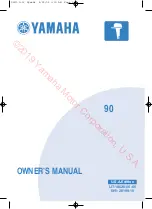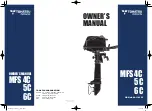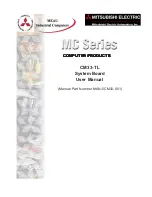
BL4S200 User’s Manual
13
1.6 Wi-Fi Certifications (BL5S220 Model only)
The systems integrator and the end-user are ultimately responsible for the channel range
and power limits complying with the regulatory requirements of the country where the end
device will be used. Dynamic C function calls and sample programs illustrate how this is
achieved by selecting the country or region, which sets the channel range and power limits
automatically. See Section 6.2.4.1 for additional information and sample programs dem-
onstrating how to configure an end device to meet the regulatory channel range and power
limit requirements.
Only RCM5400W modules bearing the FCC certification are certified for use in Wi-Fi
enabled end devices associated with the BL5S220 model, and any applications must have
been compiled using Dynamic C v. 10.40 or later. The certification is valid only for
RCM5400W modules equipped with the dipole antenna that is included with the modules,
or a detachable antenna with a 60 cm coaxial cable (Digi International part number
29000105). Changes or modifications to this equipment not expressly approved by Digi
International may void the user's authority to operate this equipment.
In the event that these conditions cannot be met, then the FCC certification is no longer
considered valid and the FCC ID can not be used on the final product. In these circum-
stances, the systems integrator or end-user will be responsible for re-evaluating the end
device (including the transmitter) and obtaining a separate FCC certification.
NOTE:
Any regulatory certification is voided if the RF shield on the RCM5400W
module is removed.
1.6.1 FCC Part 15 Class B
The RCM5400W RabbitCore module has been tested and found to comply with the limits
for Class B digital devices pursuant to Part 15 Subpart B, of the FCC Rules. These limits
are designed to provide reasonable protection against harmful interference in a residential
environment. This equipment generates, uses, and can radiate radio frequency energy, and
if not installed and used in accordance with the instruction manual, may cause harmful
interference to radio communications. However, there is no guarantee that interference
will not occur in a particular installation. If this equipment does cause harmful interfer-
ence to radio or television reception, which can be determined by turning the equipment
off and on, the user is encouraged to try and correct the interference by one or more of the
following measures:
•
Reorient or relocate the receiving antenna.
•
Increase the separation between the equipment and the receiver.
•
Connect the equipment into an outlet on a circuit different from that to which the
receiver is connected.
•
Consult the dealer or an experienced radio/TV technician for help.













































